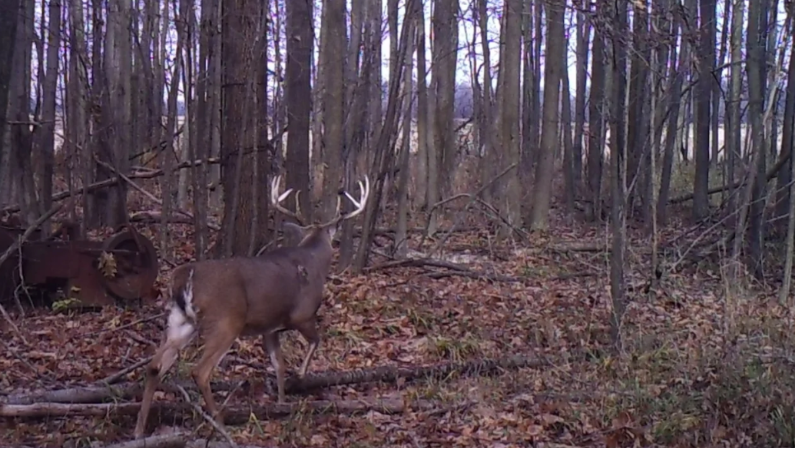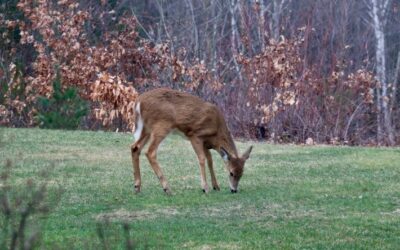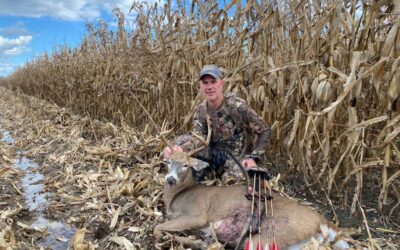You want to be able to tell the age of bucks on a property that you may have just acquired hunting permission. It is hard to fully grasp a single deer’s age by any sole factor. It is imperative to take multiple factors into consideration to gain a better understanding of a whitetail buck’s age.
It is a common misconception that a buck’s antlers are a good indication of a buck’s age. If that were the case, wouldn’t every 10-point be an old deer? That is just not the case at all.
The infield aging factors that should be taken into consideration are body shape, the deer’s teeth, antler MASS, and your general knowledge of the area you are hunting.
Tables of Contents
Buck’s Age Groups
Buck’s Age Based on Teeth
Why Antlers Have More to do with Genetics and Nutrition
Buck’s Age by Sheds and Trail Cam Pics
Antlers and Body Shape
Average Bucks in your Area
Conclusion
Buck’s Age Groups
I will not be using the and half in any of the descriptions of each age group of deer. It is understood that deer are born in the spring and by the time hunting season rolls around they are ½ way through a full year cycle.
These descriptions are a parameter for whitetail deer. They are not a set-in-stone rule. A lot of body figures and antler growth is based on their nutrition and how many nutrients they receive all year round.
Yearling Buck
A buck that has been born in the spring of the same year you are hunting will be noticeable. Their bodies will give you so many clues that they are a yearling.
Their bodies will be noticeably smaller than all other bucks. Their legs will look proportional to their small bodies. There will also be no definitive form to their rump muscles… it will look flat near their hind legs.
The antlers on a yearling buck are known as button bucks. You may be able to see small bumps where the antlers will eventually grow in the next year. You will want to do a double check of these bumps to ensure you are not shooting a button buck when you mean to shoot a doe.
Yearling bucks may also have faded spots on their back. This is due to all fawns being born with spots. These spots should be an indicator in the field to let him walk.
Yearling bucks can also be found still traveling with their mom. They have not yet reached an age where they are able to breed. This means that they have no desire to start fending for themselves; rather, they will stay with their mothers and other female deer to ensure their safety.
1-Year-Old Buck
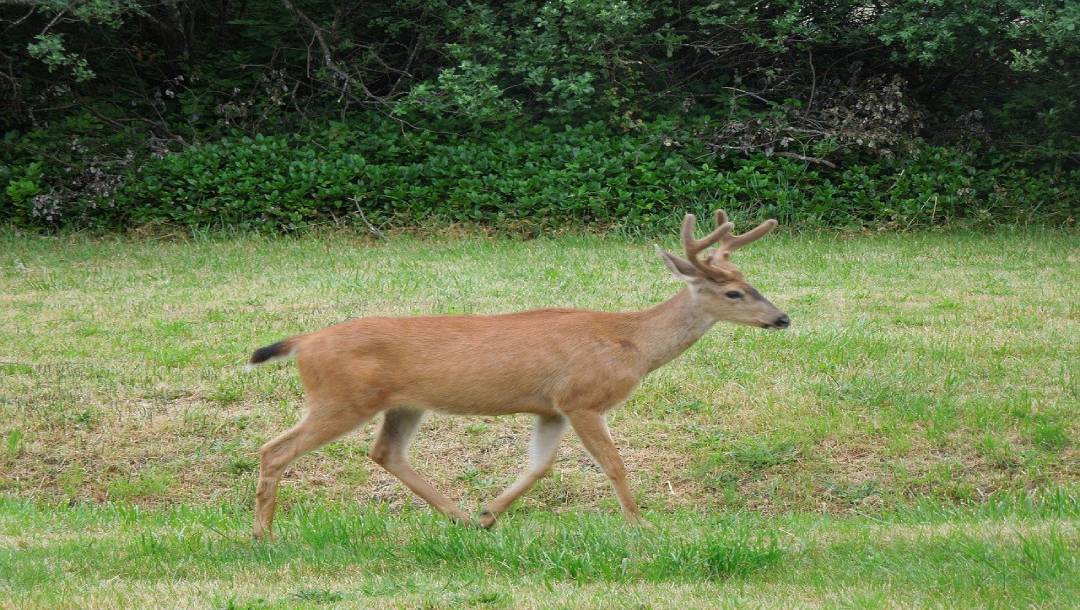
Notice how all of the factors that need to be taken into consideration would lead you to classify this buck as a 1 1/2-year-old buck. That is the power of analyzing a buck in the field.
The year-old buck has had an entire year and then some to grow and learn how to survive on their own. These aged bucks can be found interacting in rutting and pre-rutting activities.
Their antlers vary greatly for these types of bucks and there is not a good way to use the antlers as any indication of the deer’s age.
Instead of looking at the buck’s antlers for age, look at the body shape. The stomach will have no dip in it at all. The back end of the deer will have little to no definition because the muscles have not been able to fully grow and reach maximum strength. The Neck is also a good aspect to look at. The neck will look skinny and thin.
As the buck is starting to participate in rutting-like activities such as rubbing, scraping, and breeding, the buck starts to produce the scent that comes out of the tarsal gland. The tarsal gland, located on the hind legs, will be lightly shaded because this is the first year that the buck has needed the tarsal gland to interact with other bucks.
Antler points can vary all the way from a spike buck to a 6-8 point. However, the biggest antler clue for young bucks is the mass of the antlers. The mass of a year-old buck’s antler will be skinny, and the main beams will be small. This is a good way to judge a young buck’s antlers and their relation to its age.
2 Through 4-Year-Old Bucks
After two years, bucks have started to show more dominance among the general population. This age class of bucks will have some definite muscle shape. The muscles on the buck’s hind end will be noticeably rounded off. It will no longer appear to be flat all the way around.
The buck’s antlers can help you infer the age of a buck because they will be slightly bigger with longer tines. However, the points of the antlers cannot be the single reason to conclude a buck’s age.
The buck’s tarsal glands will be noticeably stained dark brown from 2-4 years of breeding and interacting with more mature bucks.
The neck of a buck ages 2-4 will be gaining thickness as they age. The thicker and fuller the neck looks can be another factor taken into consideration for aging a whitetail buck.
The last body part you will want to look for when aging a buck is the stomach and legs. If a buck is still 2 years old the stomach of the buck may have the slightest bit of a dip to it. It will be harder to notice than a 4-year-old buck. A 4-year-old buck will have a noticeable dip in the stomach.
The legs of deer in this age class will start to look more fitting for their bodies. The legs will no longer look too long for the buck’s body. It is important to remember that as a buck gets older, it will grow more into its body.
I merged these age groups of bucks together for the description of their bodies and antlers because when aging bucks based on antlers, you want to look for growth in mass as a sign of a mature buck. The next age group of deer is when you will start to see more mass. Points on the deer’s antlers will not likely continue to go up after the age of 4. 4-years-old is the general age that a buck’s body has reached its full capacity of growth.
Bucks Ages 5 and older
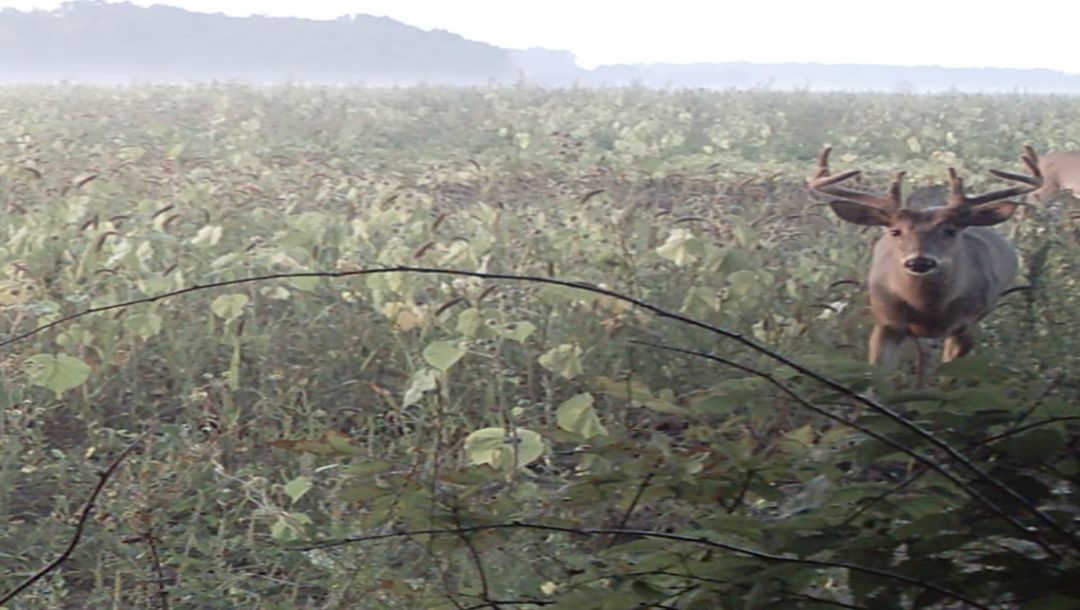
This buck has a dipped stomach, nice antler mass, legs look to small for body, and body look full and muscular. Definitely a mature whitetail buck.
Once bucks have reached the age of 5, they have reached their full-body growth and can focus all their energy on growing antler mass. This is the time frame when it is easier to age a whitetail buck based on its antlers. I still want to go over the body features that should also be taken into consideration when trying to age a mature buck on foot.
A buck that has already reached the full body and bone growth will show pristine muscle tone in the hind legs that will be a hint to you that they are a mature buck. The shoulders of a mature buck will also be fully toned and muscular.
The stomach of a mature whitetail buck is a good indicator of age. The lower the dip in the stomach is, the older the deer most of the time.
The neck of a mature whitetail buck is thick and almost seems too thick for his head. They have started to gain extra fat, skin, and muscle as they are fully developed.
The glands of a mature whitetail will look extremely dark. The glands will also have a distinct and strong smell that if you are downwind of the buck, you possibly will be able to smell.
The legs of the mature buck will be very stiff. Stiffness becomes more prominent as the deer continues into the 7–9-year-old range. Nevertheless, even at the age of 5, the legs of that buck will look almost too small for how large the buck has become.
As I mentioned above, as whitetail bucks get older their antlers grow each year with more mass until the age of about 8 or 9. Just because the mass increases do not mean that the points will also grow in number. It is not impossible just unlikely.
Buck’s Age Based on Teeth
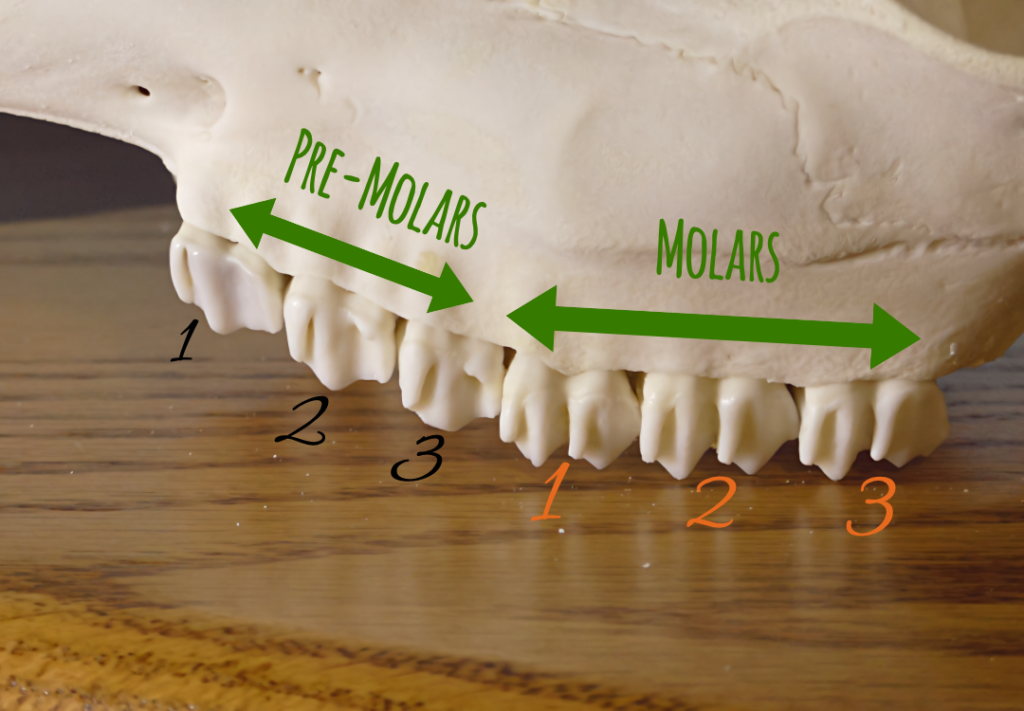
Picture taken from the buck my dad had European mounted this year.
Although that inspecting all the physical aspects of a buck’s body can give you a close estimate of a buck’s age, it is a more accurate aging process of looking at a buck’s teeth. The teeth are an interesting way to understand a buck’s age because of the way they decompose over time.
Any deer’s teeth will tell where the deer is in its life cycle. This is a great way to age a deer after you have made a lethal shot. I will go through the life cycle and explain how many teeth and what they look like can use as an indicator for a buck’s age.
Fawn Buck
Fawns that are the age of 0-4 months old will only have the first three pre-molars. These molars will be sharp. There will be no primary molars present yet. Once the fawn reaches about the age of 9 months, all pre-molars have grown in and 2 out of 3 primary molars have grown in. There is no sign of enamel deuteriation and the teeth are still sharp.
1 ½-Year-Old Buck
Bucks in this age class have just started to show their 3rd molar or it has recently fully erupted. There is still no wear on the enamel of the teeth.
2 ½-Year-Old Buck
This age class of bucks has great teeth that are fully developed. The teeth will have all three of the pre-molars and all three of the primary back molars. All teeth will be showing little to no wear on the enamel.
3 ½-Year-Old Buck
A buck that is roughly 3 ½ years old will already have all permanent teeth. At this age, teeth of the buck will show wear on the first three teeth and the first primary molar. The wear on these teeth is minimal and the enamel is still very present.
Buck’s ages 4 1/2 and Older
As a whitetail buck gets older, the enamel on its teeth will slowly deteriorate. The teeth will gradually erode every year.
This method of looking at the teeth of a buck after the shot is really used to put bucks into their age class of fawn, young buck, and full matured buck.
The deer without all molars are still in the fawn and young buck age class. Once the buck has all its teeth, you know that this buck is at least 2 ½ years old. From there it is a matter of looking to see how much wear the teeth have taken.
If you are solely interested in how to age a buck based on their teeth follow this link to a Clemson publication strictly dedicated to the whitetail deer teeth aging process. The images will give you a much better understanding of the teeth and what they look like each year of enamel wear.
To get a much better view of what enamel wear will do to whitetail deer and how it is used to estimate a buck’s age check out this study done by Clemson University.
Antlers Have Less to do with Age, Rather More to do with Genetics and Nutrition
The reason that you can never truly tell how old a buck is by looking at just their antlers is that antler growth is not based on age alone. In fact, the two biggest factors of antler growth are genetics and nutrition.
Buck’s Antlers and Genetics
Antler’s growth and formation are directly related to genetics. Genetics of bucks get passed down year to year. The concept of culling bucks sprouted because of antler genetics and trying to improve them amongst your property’s whitetail deer herd.
It is important to understand this because a buck with good genetics maybe a 10-point buck by the age of 1 1/2. The number of points has nothing to do with the age of the deer.
Nevertheless, the mass of a buck’s antlers is related to age. Once a buck reaches a fully developed body at the age of 4 1/2, the buck can then begin to focus its energy strictly on its antlers and growing its mass.
Buck’s Antlers and Nutrition
Whitetail bucks need the proper nutrition to maximize their antler growth. If they have the proper nutritional diet, bucks can have plenty of energy and proteins to grow their body and their antlers at the same time. (Insert study about nutrition and antler growth)
The best way to ensure that all the deer in a property’s herd have proper nutrition is to manage the number of deer in the herd. One way to do this is by shooting more female deer in the early parts of the hunting season.
Nutrition plays a huge role in antler growth and overall whitetail deer health. You want to make sure that you are doing everything possible to ensure your deer are receiving the best nutritional diet possible.
Look at some studies done on the nutritional diet of bucks and how it affects their antler growth done in the whitetail deer world that has been laid out in a blog post by antlerking.com
Buck’s Age by Sheds and Trail Camera Pictures
When thinking about deciding a buck’s age by its antlers, it is imperative to use your trail cameras and any shed that you may find while doing pre-season preparation. While using both of these resources you can make a very educated guess at a whitetail buck’s age.
Trail Cameras
Trail cameras are hunter’s way to have eyes and sometimes ears in the woods. We want to use those resources to our advantage.
Trail cameras can be a great way to get the age of a buck. Bucks that have shown themselves on a trail camera for multiple years can be tracked. You may need to do some research and data tracing of your trail camera pictures to achieve the proper age of a buck. If a buck has shown himself for multiple years on a trail camera, a hunter will want to pair this knowledge with the body of a buck.
Pairing the multiple years that a buck has been seen on camera with the body shape of the buck from above will give a great understanding of how old a certain whitetail buck could be.
Sheds
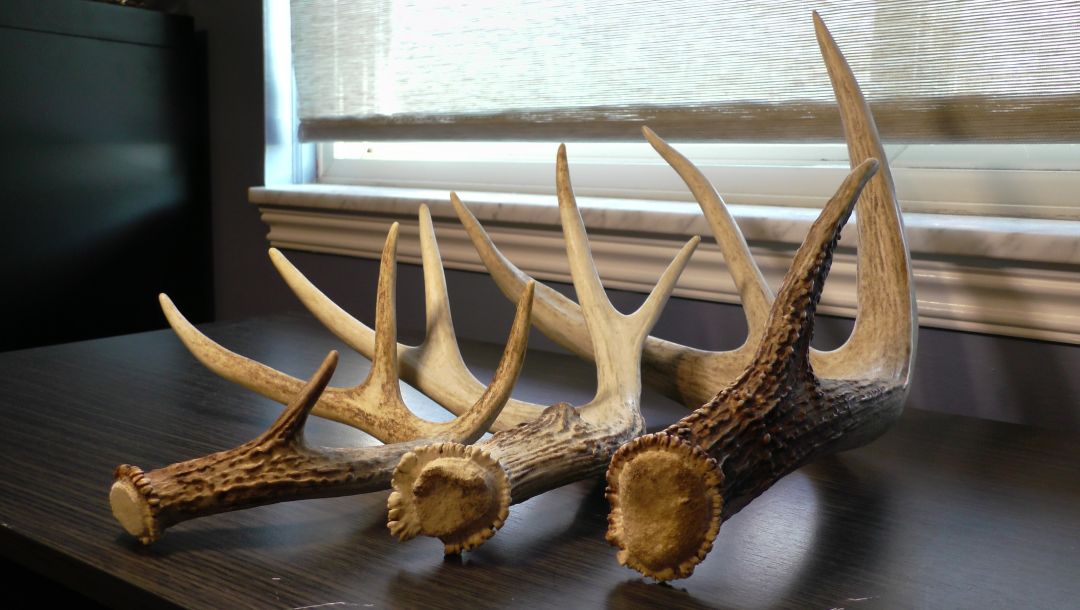
Take a look at the mass of each one of these antler sheds. As you can see, the mass of each point grows every year. This is a good indicator of age based on antler mass found on sheds.
As you are doing your pre-season scouting and planning, you may come across buck sheds. If you do not know what a buck shed is, sheds are antlers that have fallen off the buck. Bucks shed their antlers in the winter every year and grow back in velvet and rub the velvet off after antlers have reached full growth for that year.
Let’s say you found a great 8-point shed. What do you do with it now? You want to save it somewhere as something to be proud of and you want to try to pair it with a buck on your trail camera. This will help you get the age of the buck based on their antlers.
If you can pair the shed to a specific buck, look for all the body features to get the proper age. After that, look at the antler shed and understand what the points look like. If you can get a good idea of how symmetrical, non-symmetrical, and yearly growth of the same buck, then you will be able to infer both the age of that buck and what the buck’s antlers may look like next year.
Understand Both Antlers and Body Shapes
As I mentioned in the opening paragraphs of this article, antlers alone can never be the determining factor when aging a whitetail buck. However, antler mass and body size can give you a good clue as to what age group a buck is in. The three stages that I use are the small bucks, maturing bucks, and fully mature bucks.
If a buck has all the features of a mature buck in his body shape but has antlers that are only 6 points, then he may qualify to be a cull buck.
Do not be fooled any mature whitetail is smart! They will still be a trophy to hunt and overcome the challenges of putting a mature buck on the ground. The antlers just will not be as big… and that shouldn’t matter as much as consistently shooting a mature buck.
Try to pair the size of a buck’s antlers with the buck’s body shape and you will have a good idea of what age group that buck is in. Then based on your property management goals, decide on what bucks are shooters and which bucks you should let walk.
Average Antler Size of the Bucks in Your Area.
A buck’s age in relevance to antler size depends on the average buck’s antler size in your area. The property that you hunt is a huge factor in antler growth and buck size. If you know that the average 3 ½-year-old buck is a 6 point with a small amount of mass is common in your area, then aging a buck that has 6 points a little bit of antler mass can be aged by using your knowledge of the area you are hunting.
These are just general guidelines and are another piece of knowledge that should be considered. It is by no means the best way to determine a buck’s age based on antler size.
I will give my own personal example to share.
Where I hunt, the bucks are grown in corn and soybean fields mostly. Food is plentiful and safety is normally not a concern until the crops have been harvested.
The average 3 ½-year-old buck in my area is roughly 6-8 points with little mass. Any buck that is bigger than that is usually a mature buck. These bucks have a good amount of mass and points of the buck ranges from 8-10 points. In the field when I see a buck that has only 4-6 points, I know that I should pass this buck and let him grow another year. These kinds of bucks are usually 1-2 years old and have plenty of growth potential.
The sad reality is that bucks in my location have a hard time surviving the hunting harvest past the age of 4 ½. It does happen just not as often and when they do, they are extremely hard to hunt.
Conclusion of Easily get Buck’s Age in the Field
The main takeaway from this post is yes, it is possible for you to get a really good estimate of a buck’s age. You just need to connect all of the dots. Take into consideration antler mass, body shape, teeth wear, and data from trail camera pictures and antler sheds. It is really a powerful way to make an educated guess on a buck’s age.
If you would like to get the exact age of your whitetail deer, there are a few services that can assist you! Check out the prices to get a buck aged at https://ageyourdeer.com
Thank you guys for visiting The Whitetail Teacher! If you enjoyed this post make sure to share it with a friend.
You can also show support by going over to the socials listed below and giving me a follow. I appreciate it and it helps keep spreading the love for Whitetail Deer Hunting.
If you have any questions or recommendations for new blog posts, please email me and I will respond as quickly as I can: Loganpetzold@thewhitetailteacher.com
Learn, Plan, Execute,
The Whitetail Teacher

